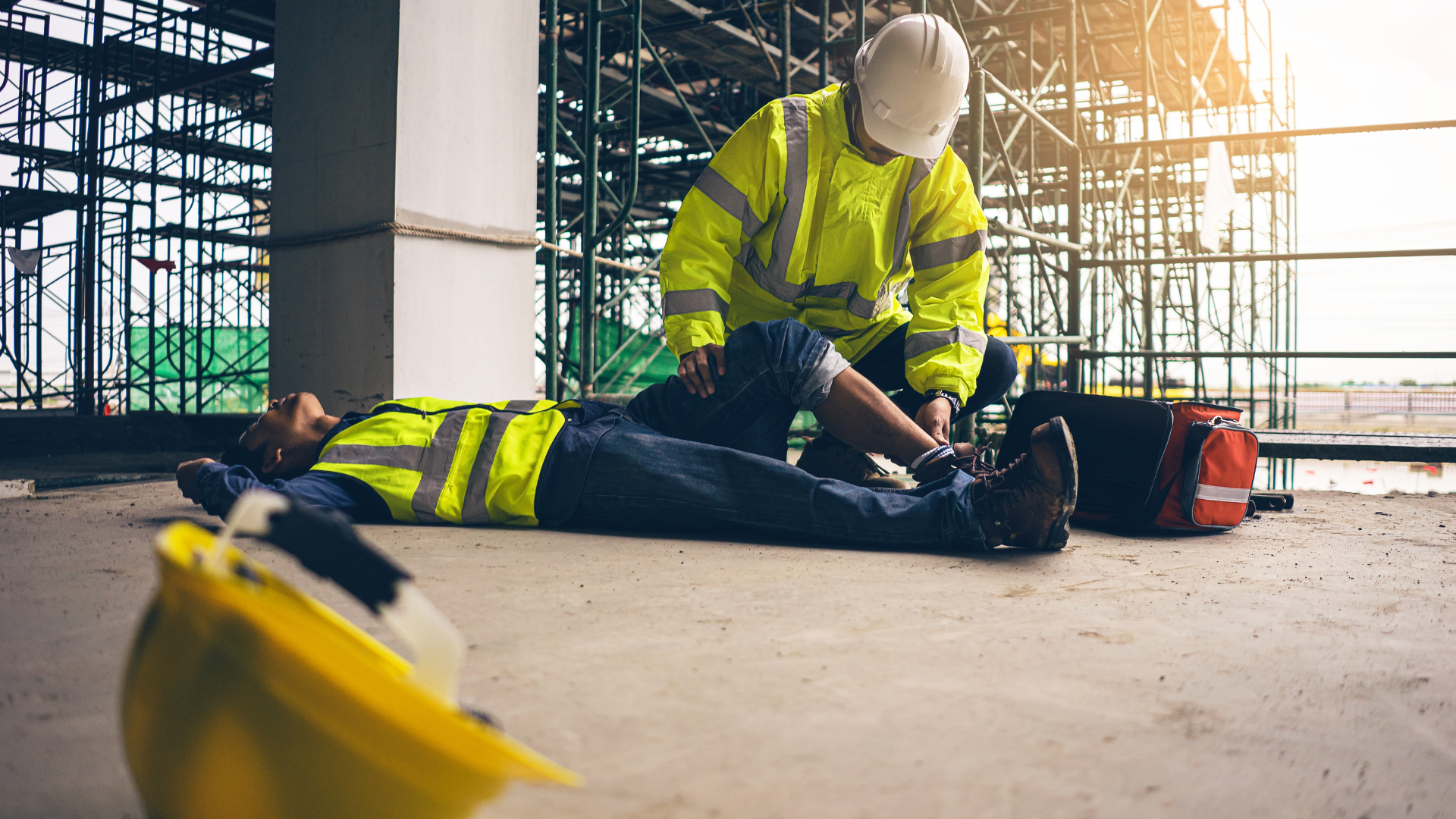SafeDE News
Smarter workplaces are safer workplaces. SafeDE is your resource for OSHA news, regulation changes, recalls, and everything to keep your business safe.
20 Tips for Safe Forklift Operation | Expert Advice
Forklifts are an essential tool in many industries, but their prevalence can lead to job site hazards. That’s why safe forklift operation is essential. Below, we cover some of the most important forklift safety tips you need to know to keep yourself and others safe on the job.
20 Essential Tips for Safe Forklift Operation
We’ve made it easy for you to ensure safe forklift operation. The following tips will teach you how to get the most out of your forklift use in a manner that reduces workplace hazards.
1. Get a Forklift Certification
The Occupational Safety and Health Administration (OSHA) stipulates that only trained and certified workers may operate a forklift. Certification requires the user to be at least 18 years of age, pass an exam, complete a training course, and pass a forklift driving test. The certification must be renewed every three years.
2. Always Follow the Instructions
A forklift should only be operated as intended by the manufacturer. Adhere to all workplace operating policies and the safety instructions that come with the vehicle.
3. Buckle Up, Always
Any forklift produced after 1992 is required to have a seatbelt under OSHA law. OSHA recommends that you always wear a seatbelt when the forklift has one.
4. Conduct Daily Equipment Inspections
Forklifts should be thoroughly inspected daily before use. An inspection should include checking the following parts:
- Tires – Ensure that tire pressure is within recommended limits and that there are no cuts or leaks anywhere on the tires.
- Brakes, Lights, and Horn – Check to see that these safety mechanisms are functioning properly.
- Forks – Be sure that the forks are not cracked, bent, or otherwise damaged.
- Seatbelt – Check that the seatbelt is present, undamaged, and latches securely in place.
- Radiator and Fluid Lines – Check for any leaks in the radiator, steering, and braking system.
5. Dress the Part
Never wear loose clothing while operating a forklift, as it can become caught in moving parts. Whenever appropriate, wear essential personal protective equipment (PPE). This may include a high-visibility vest, hard hat, and work boots.
6. Never Exceed Capacity
Every forklift was designed to transport a certain maximum load. Know the appropriate rating for the vehicle, and be sure you don’t exceed it.
7. Maintain Complete Visibility
Ensure that your path of travel is free of obstructions and pedestrians. A spotter can help the forklift operator navigate when the path is obstructed. If the load is blocking the driver’s view, the forklift should be operated in reverse.
8. Keep Forks Low
Whenever possible, the forks should be kept 4 to 6 inches off the ground. This will promote good visibility and ensure that the vehicle is at its most stable.
9. Maintain a Safe Speed
Braking, accelerating, and turning the forklift should be done slowly and smoothly. Avoid sudden movements. Follow all posted speed limits, and slow down while traveling through congested areas.
10. Create & Follow Floor Markings
The operating area should include signs and brightly colored markings to denote hazards. The forklift should be kept to designated paths whenever possible, and the driver must always be well-versed in the meanings of signs and other markers.
11. Watch for Pedestrians
Always check for pedestrians before beginning forklift operation. When pedestrians are present, a safe operating distance must be maintained at all times. Horns and lights will help make pedestrians aware that they are near an active forklift.
12. Secure All Loads
When traveling with a load, the load should always be tilted backward, and the forks kept low to the ground for maximum stability. The materials being picked up or deposited should always be checked for balance before proceeding.
Move cautiously around turns, and always be aware of overhead hazards when working with elevated loads.
13. Be Cautious on Ramps
Ramps should be ascended head-on in a forward direction while descending a ramp should always be done in reverse. Do not turn or load/unload materials while on a ramp.
14. No Extra Riders
Unless there is a passenger seat, only the driver should be inside the forklift during operation.
Never carry passengers or allow others to ride along on the outside of the forklift. If people are to be carried, it should only be done with the use of an approved attachment, such as a cage designed for employee transit.
15. Distribute Loads Evenly
All loads should be distributed evenly across the two forks. Be sure that the forks are positioned fully underneath the load.
Pallets and skids should be used to even the weight of the load, but make sure they are appropriate for the weight of the material being transported.
16. Keep Arms and Legs Inside
The driver should keep arms and legs inside the operating area at all times. Do not reach out from the forklift for any reason.
17. Know Your Surroundings
Always be aware of what’s around you during forklift operation. This may include pedestrians and hazards such as slippery surfaces, hard obstacles, ramps, and other work equipment.
18. Report Issues Promptly
Any mechanical issues with the forklift should be reported immediately to a supervisor. Do not use faulty equipment until repairs have been completed.
19. Park Properly
Never park a forklift on an incline. Parking should be done in flat, designated areas only. Lower the fork to the ground, turn off the engine, and engage the parking brake.
20. Refuel & Recharge
Your forklift should be turned off while charging or refueling. Only refuel or charge the forklift in a designated area, and keep the forklift fully charged or fueled during operation.
Final Thoughts
It is important to ensure that only individuals who are certified to operate a forklift are allowed to do so. In addition to getting certified, take the time to make yourself fully aware of the operating area, the equipment, and any potential hazards before you begin using the forklift. With these tips in mind, you should be well on your way to mastering safe forklift operation.
Frequently Asked Questions (FAQs): Safe Forklift Operation
What are some tips for safe forklift operation?
Safe forklift operation includes understanding signs and markings, maintaining safe operating speeds, and checking for hazards before you begin work. Report any maintenance issues or observed hazards immediately.
How should forklift operators ensure pedestrian safety?
Maintain a safe operating distance from pedestrians and use horns and lights as needed to be sure pedestrians are aware of a moving forklift.
What are the proper procedures for parking and stacking a forklift?
Forklifts should be parked with the forks low and parallel to the ground. Park only in designated areas. Stacking should be done slowly and carefully. Make sure the load is balanced appropriately, and stop the vehicle with the forks close to the stack so that pedestrians do not attempt to pass between the vehicle and the stack.
What is the OSHA speed limit for forklifts?
OSHA does not have a speed limit for forklift operation, leaving this up to employers to determine. However, a 3 mph limit is recommended in congested areas, while 8 to 10 mph is recommended for general operation.
Are there any safety devices or features that can help prevent accidents?
Seatbelts, horns, lights, and mirrors should all be present and in good working order. These features will help prevent accidents and injury.
What should forklift operators do in the event of a tip-over?
Do not jump from a forklift that is tipping or has tipped over. Grip the wheel firmly, stay seated, and plant your feet on the floor. Wait for assistance and medical attention before leaving the forklift, and only exit the vehicle when it is deemed safe to do so.
Get SafeDE News
Workplace safety for all businesses.
SafeDE provides FREE comprehensive onsite surveys for small and medium sized private sector establishments to identify potential workplace hazards, improve safety and health management systems, and assist in voluntary compliance with federal OSHA regulations.
Related News

Basic First Aid Tips for Workplace Safety
.png)
Firework Safety

Ladder Inspection Requirements: What You Need to Know
-1.png)
Committed to Safety: What is It & Why It Matters
-1.png)
Workplace Safety Tips: Protect Yourself with PPE and More
.png)
Behavior-Based Safety Programs: A Complete Guide
-1.png)
5 Essential Workplace Fire Safety Tips to Prevent Fires

Your Complete Guide to Workplace Health and Safety During Halloween
-1.png)



